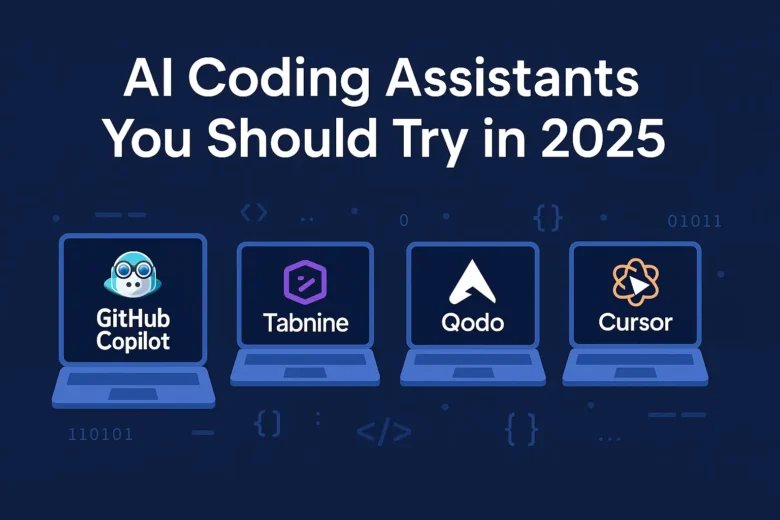In 2025, AI tools have become more than productivity boosters they’re partners in coding. Whether you’re debugging, writing documentation, or auto-completing code snippets, these AI coding assistant tools help developers streamline their workflow and focus on bigger challenges.
🔍 Meet the Top AI Coding Assistants
1. GitHub Copilot
A trusted assistant developed collaboratively by GitHub and OpenAI, Copilot integrates directly into major IDEs like Visual Studio Code and JetBrains. You can describe functionality in plain English and receive working code snippets—perfect for quick prototyping or boilerplate tasks.
2. Tabnine
Tabnine supports over 80 programming languages and works across most IDEs. It excels in smart code completion and context-aware suggestions, making it a go-to for developers working on multi-language apps.
3. Qodo (Formerly CodiumAI by TestGPT)
Qodo goes beyond code completion. It automatically generates unit tests, reviews new code, and helps improve test coverage. It’s ideal for teams that prioritize quality and test automation in CI/CD pipelines.
4. Cursor by Anysphere
Cursor offers a unique “vibe coding” experience—natural-language to code conversion in real-time. It understands your entire codebase, allows you to run commands like “create login form,” and even refactors code as you write.
✅ Why Choose an AI Coding Assistant?
1. Productivity Gains
Instead of typing repetitive code, you prompt the assistant. It handles the rest—freeing you to design, test, and innovate.
2. Fewer Mistakes
These assistants identify syntax errors & suggest corrections instantly. Cursor’s “Bugbot,” for example, flags security flaws even before you run your code.
3. Faster Learning Curve
Novice developers learn faster by seeing AI-generated examples and inline suggestions. It’s like having a coding mentor at your side.
4. Better Documentation
Many tools auto-generate docstrings and comments, ensuring your code is well-documented and easier for teams to understand.
🧠 Comparison Table
| Tool | Strengths | Best For |
|---|---|---|
| GitHub Copilot | Natural language prompts, strong IDE support | General development across any stack |
| Tabnine | Multi-language support, smart completions | Large, multi-language codebases |
| Qodo (TestGPT) | Automated testing & reviews | Enterprise teams seeking robust testing |
| Cursor (Vibe Coding) | Language-based workflow, command generation | Fast mockups and creative prototyping |
🚀 What Developers Are Saying
In 2025, developer forums praise these tools not just for speed, but for enabling smarter workflows. They no longer manually type repetitive code—they write intent, and the AI fills in the rest. Many developers mention they’ve shifted focus from syntax to logic and architecture thanks to these tools.
✅ Getting Started with an AI Assistant
- Pick your preferred coding editor (VS Code, JetBrains, or Cursor).
- Install one assistant at a time to trial its features.
- Test edge cases—like UI generation, REST APIs, or documentation.
- Try agentic features (Cursor commands, Qodo’s test suggestions) for workflow automation.
⚖️ Pros & Cons
Pros:
- Boosts speed and reduces repetitive tasks
- Improves code quality and testing
- Accelerates learning for new developers
Cons:
- Potential over-reliance on AI-generated code
- Licensing and security concerns in proprietary code
- Risk of prompt misuse or biased output
🔚 Final Thoughts
AI coding assistant tools are not just hype—they’re changing how software is built. Whether you’re a solo developer or part of a team, tools like GitHub Copilot, Tabnine, Qodo, and Cursor bring speed, clarity, and efficiency to your workflow. Your keyboard will thank you later.

